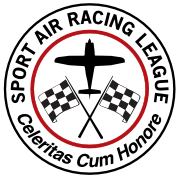- Home
- About SARL
- Media
- Race Hosts
- Race Results
- Race Memories
Sport Air Racing League
Racing for the Rest of Us!
You are here
2019 Bob Axsom Memorial Air Race

Bob Axsom Memorial Air Race
Check in 0900, 4 May, at the Taylor Airport Education Center
Mandatory Pilot's Brief 1100!
First aircraft launches at 1200!
Please have all aircraft fueled and preflighted prior to the brief.
Entry Fee.... $30.00
Awards and Lunch after the race.
The will be an open course, ~150 SM race (short course ~ 70 SM) consisting of five turn points. Race aircraft will be started in a fastest-first order to avoid passing.
BAMAR Course Information!
If you choose to stay over before or after the race, there is a Best Western just across the street from the airport.
512-352-5292
Ask for the Air Race Rate!
Also:
Luxury Inn & Suites
2003 W 2nd St, Taylor, TX
(512) 352-8700
and
Country Garden Inn
2007 North Main Street
Taylor, TX 76574
(512) 352-8722
You may contact me (Mike Thompson) at 512-663-2184.
RACE RULES AND SAFETY INFORMATION
1. All aircraft will be started with the fastest registered speeds launched first in order to prevent passing on the course. All aircraft will be launched from Taylor airport (T74), proceed directly to the Start/Finish line thence direct to Turn One.
2. Taylor’s UNICOM is 122.8. The race frequency is 123.45 and aircraft should transmit in the blind when on top of a turn, e.g. "Race Two Six, Turn Two".
3. You will be racing against the clock, not another aircraft.
4. All aircraft must pass on the outside at the turn points.
5. Racers must turn on top any turn airport point airports at least 1000 ft AGL. Non-airport turn point altitudes are governed by the FARs.
Heads up for non-race traffic! If traffic is in the pattern at a turn airport at the time you approach, you have a choice to swing wide of the traffic pattern or climb well above the pattern altitude. The airport turn observers will help with traffic information on receipt of your turn approach call.
If you are observed passing through the airport traffic pattern at a low altitude you will be disqualified.
6. All racers note the towers close to the race course. Be safe!
7. All pilots: Check your maps to find the closest airports to the race course (private fields included). KNOW THEM FOR YOUR SAFETY.
8. KEEP YOUR RADIO TUNED TO RACE FREQUENCY (123.45). IF YOU HAVE A PROBLEM, CLIMB AND COMMUNICATE!
9. When you execute a turn, announce your position on top the turn, e.g. "Race Two Six, turn two.", and a final call before crossing the finish line e.g. "Race Two Six, finish, two miles". The finish call is particularly important to give the timers a heads up that you are approaching, and who you are.
10. Make your calls crisp, clear and short to keep radio traffic to a minimum.
11. When at finish: Cross the finish line, climb straight ahead if necessary to 1600 feet MSL, make a right turn and enter the Taylor pattern. If cool down is necessary, orbit to the west of the finish line at or above 2,000 ft MSL. As you approach the Taylor traffic area, change frequency to 122.8, the Taylor UNICOM frequency.
12. After finish and cool down: Enter Taylor pattern (pattern altitude 1600 feet). Runway 35 is left traffic, runway 17 is right traffic.
This will be a busy time. Watch out and make standard uncontrolled field pattern radio calls.
13. The race runs counter-clockwise from start to finish. Entrants will be started according to the Max Speed stated on their entry forms, fastest first. This start order is used to prevent passing.
Stuff happens, however, and if any event occurs so that a racer needs to pass the aircraft in front of them, they must pass on the outside of the turns – this would be the right side of the aircraft being passed in a left turn, for instance. The passing aircraft must maintain visual contact at all times! Remember the FARs state that the aircraft being passed has the right of way.
14. As stated, all FARs must be observed during the race. In particular, the minimum safe altitude FAR bears review:
Sec. 91.119 Minimum safe altitudes: General.
Except when necessary for takeoff or landing, no person may operate an aircraft below the following altitudes:
(a) Anywhere. An altitude allowing, if a power unit fails, an emergency landing without undue hazard to persons or property on the surface.
(b) Over congested areas. Over any congested area of a city, town, or settlement, or over any open air assembly of persons, an altitude of 1,000 feet above the highest obstacle within a horizontal radius of 2,000 feet of the aircraft.
(c) Over other than congested areas. An altitude of 500 feet above the surface, except over open water or sparsely populated areas. In those cases, the aircraft may not be operated closer than 500 feet to any person, vessel, vehicle, or structure.
15. HAVE FUN RUNNING THIS RACE, BUT KEEP IT SAFE!
..
Theme by Danetsoft and Danang Probo Sayekti inspired by Maksimer
